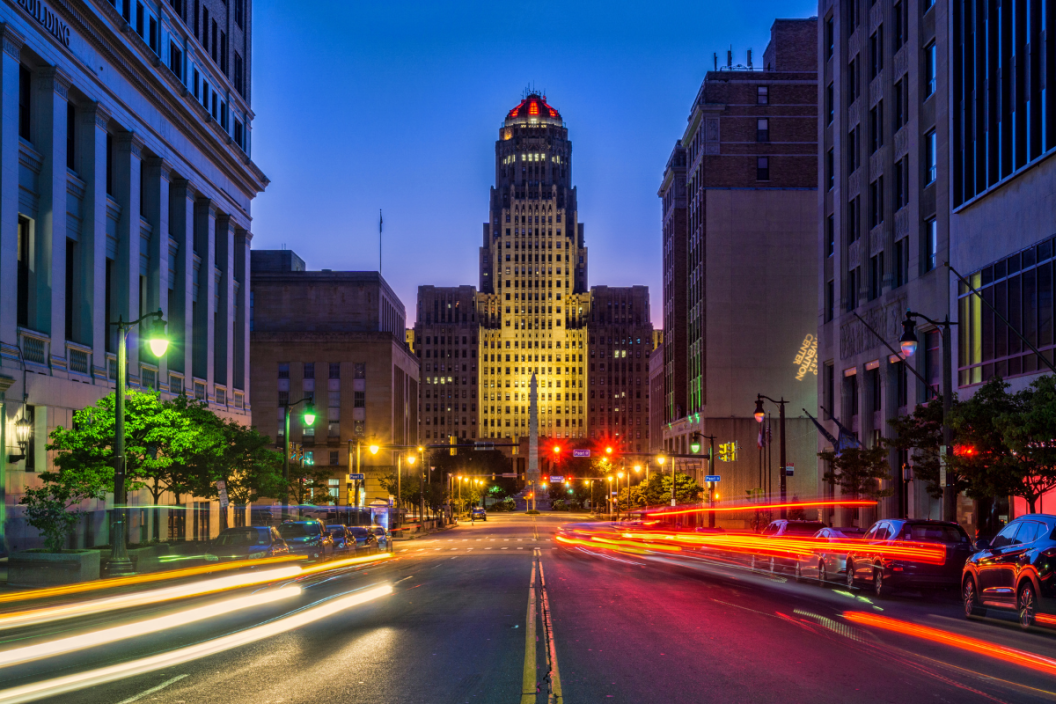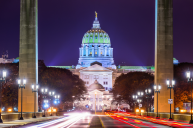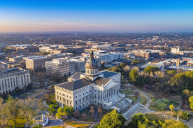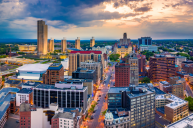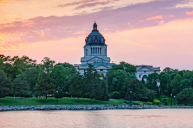"Let's Go Buffalo!" Whether you're from New York State's second-largest city or just visiting, you'll definitely hear this ringing from many street corners nearly every hour of the day since its residents are die-hard fans of its five professional sports teams, including the Buffalo Bills. It's a famously sports-crazy town, but it's also much more.
Known as the "City Of Good Neighbors," Buffalo's quarter-million residents enjoy its beachfront location across Lake Erie and its fruitful four seasons, including its notorious freezing temperatures and lake effect snow in the winter. Because of its locale on the lake, Buffalo became one of the main trading hubs in the early 1800s with the completion of the Erie Canal, which brought a tremendous economic boom and surge of immigrants to the Northeast. Today, Buffalo remains one of the top U.S. cities for international trade.
Due to its early inception and highly diversified industry, Buffalo has grown to what it is today from some astonishing historical people and references. Spanning from its early days as a shipping and naval port to its culturally-diverse art offerings and historical buildings, today we are going to take a closer look at this western New York gem and how to soak in the best of the city's history during a visit.
Ancestral Indigenous History
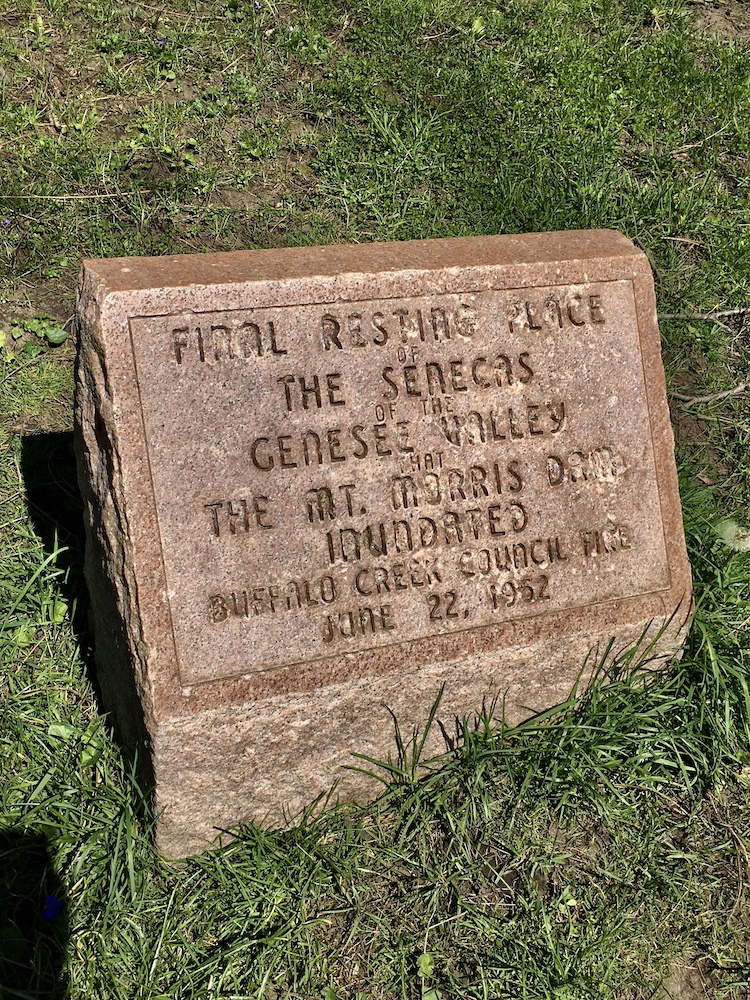
Memorial marking the burial site of the Seneca of the Genesee Valley, inundated by the Mount Morris Dam, Seneca Indian Park, Buffalo, New York, May 2020. Andre Carrotflower, CC BY-SA 4.0, via Wikimedia Commons
Before we look into the history of this Northwestern nook of New York, let's not overlook the region's native roots. Western New York is the heart center of almost 1,000 years of First Nations people history who influenced and helped shape the land. The region was originally dwelled by one of North America's most prominent Indian Nations, The Iroquois, made up of six tribes: the Mohawk, Seneca, Oneida, Onondaga, Cayuga, and Tuscarora.
Today, Western New York still holds and honors the cultural influence and relevance of the American Indians, with several Indian reservations being scattered throughout the region. Additionally, Buffalo is an urban complex made up of Native American townships, including Lackawanna, Lockport, Niagara Falls, and Tonawanda-North Tonawanda, Amherst, Cheektowaga, Hamburg, Lancaster, and West Seneca.
St. Paul's Episcopal Cathedral
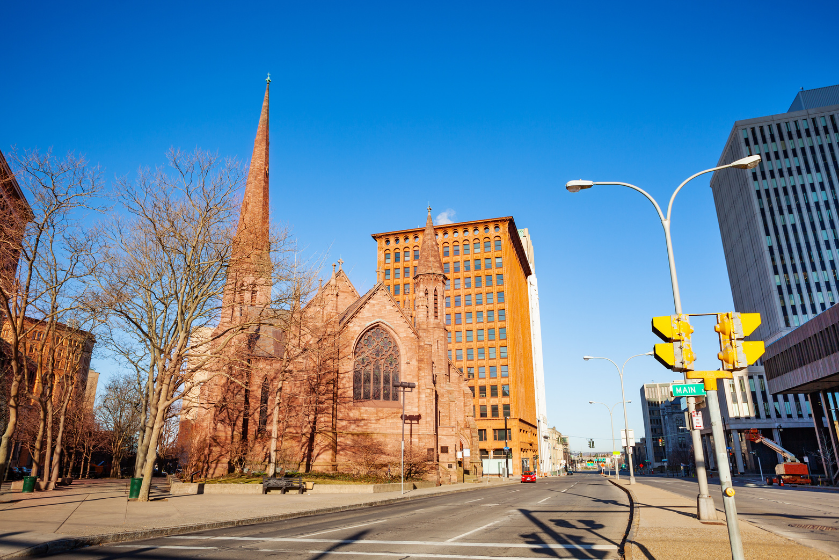
SerrNovik via Getty Images
St. Paul's Episcopal Cathedral is a magnificent example that America can build beautiful catherdrals too. Designated as a National Historic Landmark in 1987, the Gothic-style cathedral features native red sandstone surrounding the nave and stands an impressive 275-feet tall.
Unfortunately, its original 1838 interior was gutted by a fire in 1888 but was redesigned by Robert W. Gibson and reopened in 1890. It stands tall in downtown Buffalo on a triangular lot crossing Church Street, Pearl Street, Erie Street, and Main Street. The cathedral continues to be an important place of worship in Western New York.
City Hall
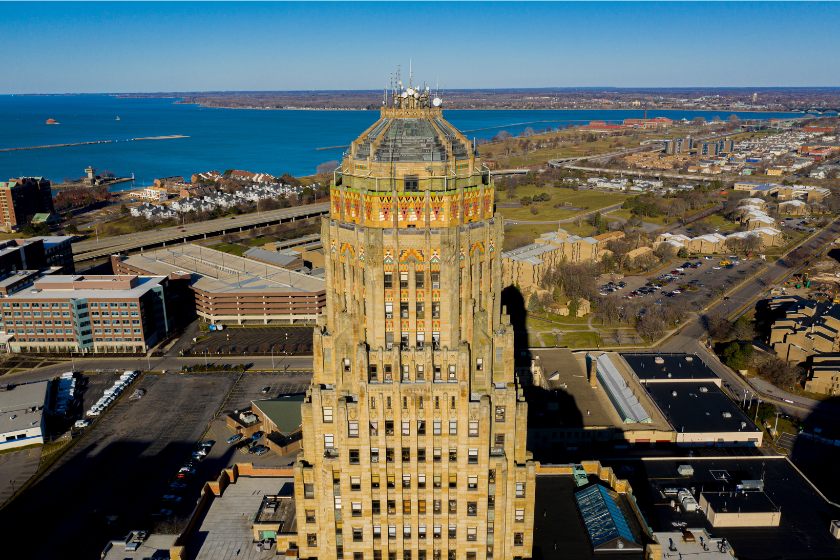
John Zaenglein via Getty Images
Another architectural staple, the 32-story Art Deco building was completed in 1931 by acclaimed architects Dietel, Wade & Jones. It ranks as one of the largest and tallest municipal buildings in the United States and is also one of the tallest buildings in Western New York.
When visiting, make sure you visit the Common Council Chamber which features a skylight and historical sculptures, as well as an Observation Tower with a spectacular view of the waterfront and the Ellicott radial street design. It was listed on the National Register of Historic Places in 1999 due to its architectural relevancy and murals depicting the city's history and industry.
Anchor Bar
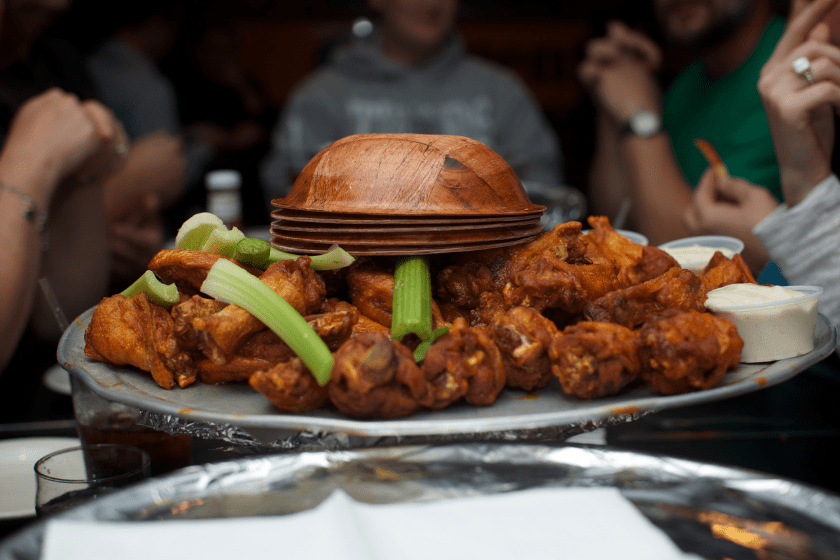
John Tornow, CC BY 2.0, via Wikimedia Commons
You can't visit Buffalo and not eat any chicken wings. Why? Because Buffalo is the global birthplace of chicken wings. While the city offers delicious chicken wings around every corner, to get the "classic" chicken wing experience, make sure you eat at the original Anchor Bar. Located at 1047 Main Street in Buffalo, the restaurant was initially established in 1935 by owners Frank and Teressa Bellissimo.
One night in 1964, Teressa deep fried some chicken wings and flavored them with a secret sauce, credited with inventing the Buffalo Wing and "the best wings in the world."
Today, the Anchor Bar has 16 locations throughout Western New York as well as Texas, Illinois, Maryland, Georgia, and Canada. You might want to consider making a reservation, especially if you want to go here on the weekend.
Theodore Roosevelt Inaugural National Historic Site
Located on the edge of the historic Allentown District on Delaware Avenue, the Theodore Roosevelt Inaugural National Historic Site preserves the Ansley Wilcox House, where Theodore Roosevelt took the oath of office as President of the United States after the assassination of William McKinley.
Go back in time during this important mark of the nation's history and take a guided tour through the museum, which includes a tour of three restored rooms, audio-visual presentations, and interactive exhibits.
Albright-Knox Art Gallery
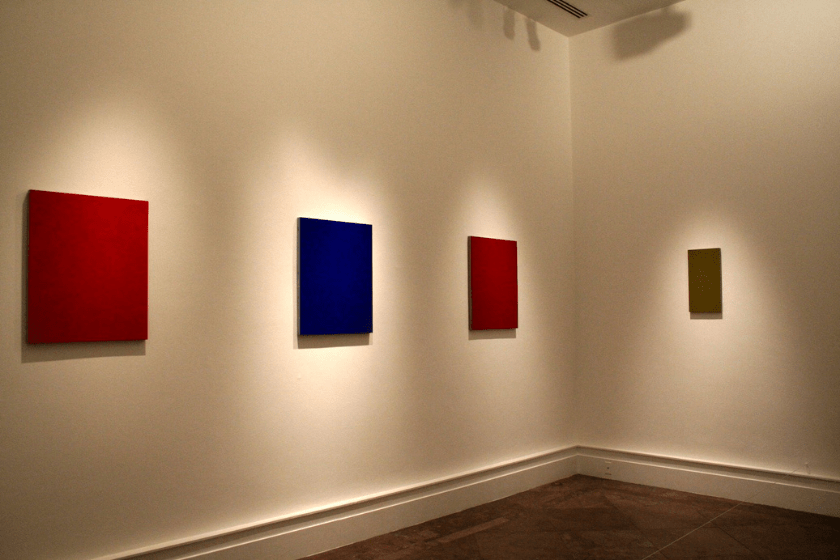
Opere di Alfonso Fratteggiani Bianchi. Foto di Matilde Fratteggiani Bianchi., CC BY-SA 4.0, via Wikimedia Commons
Did you know that Buffalo is home to over 50 private and public art galleries and is ranked fourth by American Style in its list of American top Art Destinations?
Among those is the renowned Albright-Knox Art Gallery and art museum ranking as a major showplace for modern and contemporary art. As one of the oldest museums dedicated to the art of our time and the sixth oldest public art institution in the United States, the gallery and museum stand as a vital hub in progressing a strong, diverse, artistic, and enriching landscape across the Western New York region.
The Albright-Knox's Elmwood Avenue campus is temporarily closed for construction for the future Buffalo AKG Art Museum, but you can visit the Albright-Knox Northland Hours Friday through Sunday on a "pay what you wish" admission fee.
Frank Lloyd Wright's Martin House
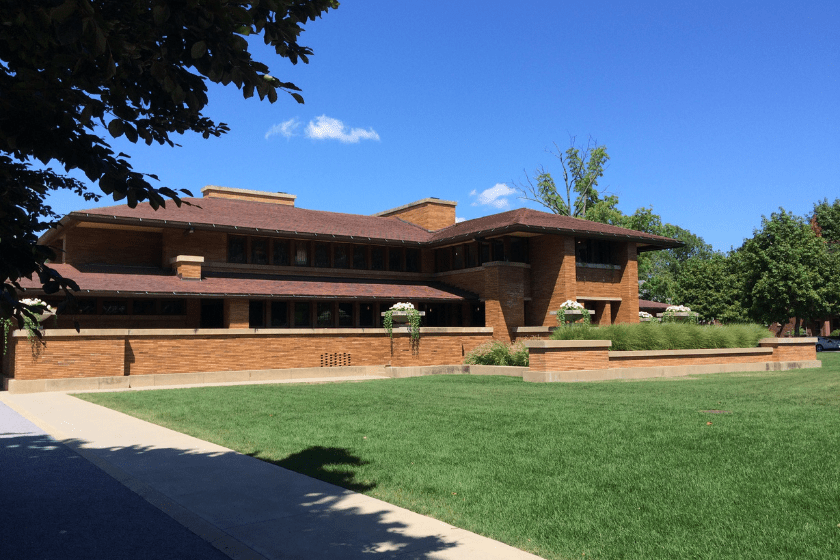
Marjoram51, CC BY-SA 4.0, via Wikimedia Commons
A premier heritage destination in New York's network of historic sites, Martin House was designed by none other than acclaimed architect Frank Lloyd as the home for Buffalo executive and self-made millionaire, Darwin D. Martin.
Built in 1905, the six-building Martin House Complex occupies more than 30,000 square feet and exemplifies the transformative influence of architecture, connecting the human-built environment to the natural world. For an immersive cultural and historical experience, take the family here for a guided day tour of this comprehensive residential estate and stroll through the gardens in the Parkside neighborhood.
Kleinhans Music Hall
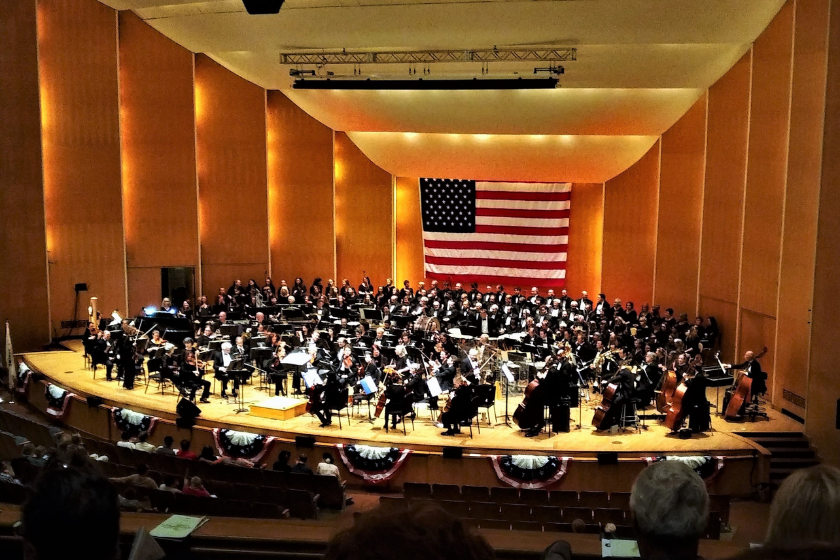
Schetm, CC0, via Wikimedia Commons
Also designated as a National Historic Landmark, Kleinhans Music Hall is renowned for its acoustical excellence and graceful architecture, making it one of the finest and most acoustically perfect concert halls in the world.
The music hall was designed by the famous Finnish father-and-son team of Eliel and Eero Saarinen, along with architects F.J. and W.A Kidd, boasting graceful structural beauty and extraordinary acoustics, resembling the body of a string instrument. It officially opened its doors in 1940, the same year of the Buffalo Philharmonic's first concert in the hall.
Today, Kleinhans Music Hall is still the home of the Buffalo Philharmonic Orchestra, a regular venue for the Buffalo Chamber Music Society, and is rented out for other performing groups and local events. With it in the heart of Buffalo's arts and culture district, consider seeing a performance at this beautiful venue.
RELATED: The Ultimate Guide to the Best Summer Music Festivals in the US
The Guaranty Building
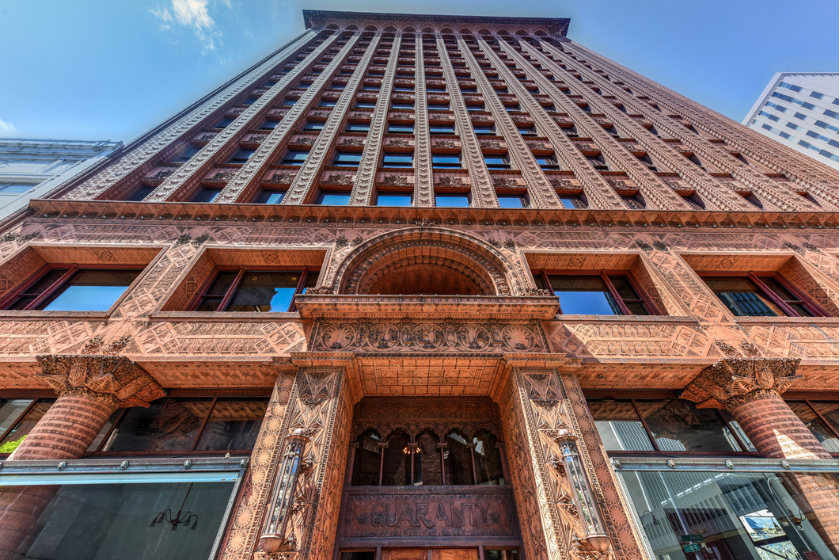
demerzel21 via Getty Images
The Guaranty Building, formerly called the Prudential Building, is an early skyscraper in Buffalo, New York. Constructed in 1896 by the "Father of the Skyscraper" Louis H. Sullivan, one of the most important American architects of the 19th century, the building was one of the first steel-supported, curtain-walled buildings in the world.
Designated as a National Historic Landmark in 1975, the building still stands as one of Sullivan's outstanding innovations, featuring a bold architectural style with the focused use of decorative terra cotta to cover two full exterior surfaces with a strong foundation of high-quality structural steel and the early inclusion of electric elevators.
You can view the building from the street or take a visit to its Guaranty Interpretative Center to learn more about the background of the iconic structure and its place in modern architecture.
The Herschell Carrousel Factory Museum
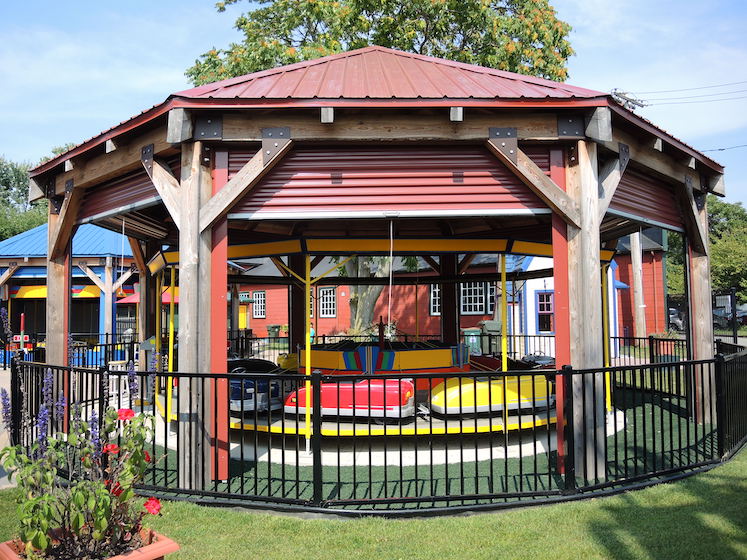
Retro automobile Kiddie ride at the Herschell Carrousel Factory Museum in North Tonawanda, New YorkDanielPenfield, CC BY-SA 4.0, via Wikimedia Commons
The Herschell Carrousel Factory Museum is the only surviving historical carousel factory in the world that is still open to the public. Located in North Tonawanda, the museum offers educational, cultural, and recreational programming surrounding the production of carousels, band organs, and amusement devices.
In the late 1800s and early 1900s, four carousel builders operated in North Tonawanda, including the Herschell-Spillman Company which became one of the most notable carousel factories in the world. The museum was listed on the National Register of Historic Places in 1985, offering attendees historical exhibits, demonstrations, and two operating carousels.
Buffalo & Erie County Naval & Military Park
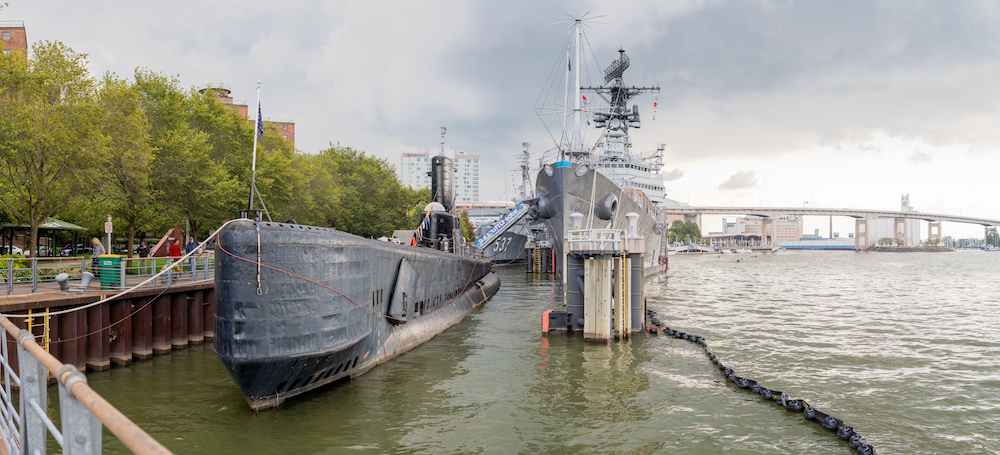
USS Croaker, USS The Sullivans, and USS Little Rock in the Buffalo and Erie County Naval & Military Park. Mys 721tx, CC BY-SA 3.0, via Wikimedia Commons
First on the list is the country's largest inland Naval and Military Park. Located on Buffalo's Waterfront in the Canalside district, this unique family destination features four decommissioned Naval vessels that served in a variety of military conflicts in our nation's history. Currently, several decommissioned US Naval vessels rest here, including the Cleveland-class cruiser USS Little Rock, the Fletcher-class destroyer USS The Sullivans, and the submarine USS Croaker.
After you tour all the military vessels, take a scroll through historic war memorials at the Monuments Garden. Here you'll honor several lifetimes of service in the U.S. Armed Forces. The Monuments Garden is home to many monuments, including the Iraq-Afghanistan Monument, Vietnam Memorial, Purple Heart Memorial, The Battle Within PTSD Monument, Hispanic and Latino Memorial, and the soon-to-be United States' first constructed Memorial to African Americans.

Mikala Lugen is an avid adventure lifestylist, rooting her life around music, mindfulness, and travel. She's currently based in Salt Lake City, Utah, where she works among the mountains every day, writing about some of the country's best musical events, as well as hiking, skiing, rock climbing, and playing with her dog Jameson in-between all of her adventures.
Where are your favorite places to visit in Utah? Share your answers with us on our Wide Open Roads Facebook!
